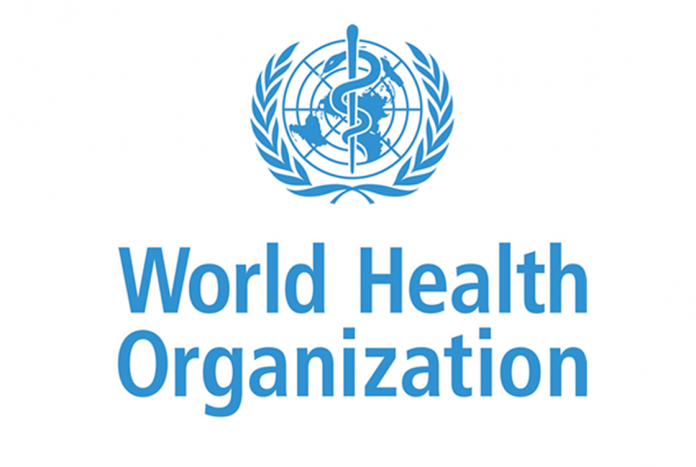This article is written by Manasvee Malviya, from the University of Petroleum and Energy Studies, Dehradun. This article deals with the misinformation spread in India during the pandemic and the role of the World Health Organisation.
Table of Contents
Introduction
The COVID-19 pandemic has left a haunting repercussion on the entire world. The world is still fighting against the virus. It is not only the governments’ responsibility to slow the spread of the virus, but also it is the responsibility of every individual. Every action counts. In history, COVID-19 is the first pandemic in which technology and social media are used to keep people safe, informed, productive, and connected. Social media has played a significant role during the pandemic, however, social media has also led to the spread of misinformation and fake news. The World Health Organization (WHO) has defined this phenomenon as infodemic. In India, the problem of misinformation and fake news is notable and a major problem. The government has the responsibility to manage and prevent the spread of misinformation without violating the freedom of speech and expression. This article will discuss the spread of misinformation and fake news amid the pandemic and also discuss the infodemic management system by WHO to control the misinformation/fake news in health emergencies.
Misinformation and fake news in India
Misinformation has affected India, resulting in obscene health care and public health information. Misinformation is referred to as unintentional misleading of information whereas fake news refers to intentional misleading of information that can be true or false. The internet is the most powerful medium and has positive as well as negative impacts. The internet allows people to fight information poverty at various levels, spreading awareness, participating in debates, raising concerns, changing the stereotypes, and most importantly, it gives freedom of speech and expression under Article 19(1) of the Constitution of India during the pandemic. On the other hand, it has also led to the spread of misinformation and fake news among the people.
According to Microsoft’s 3rd Digital Civility Index on the safer internet day, Indians were most likely to encounter fake news and misinformation. India’s most popular messaging platform- WhatsApp allows communication. As per the parent company of WhatsApp, the users roughly send around 65 billion messages every day and more than 2 billion minutes of video calls and audio calls on a daily basis. It would be foolish to say that all the messages exchanged on the messaging app are relevant, important, useful, or verified. The internet brings the good, the bad and the ugly with itself. It is the reflection of society. The conversation that takes place on the internet is the reflection of the conversation that people intended to have offline. However, offline conversations have geographical limitations and take place in relatively small groups, whereas online conversations have the advantage as there is no geographical barrier and no limitation in the number of people. Social media has one major drawback, it is blamed for initiating violence and spreading fake news, though it is unfair to blame social media for spreading or initiating violence, hatred or fake news. Even before the development of social media violation took place, it can’t be denied that social media gives anonymity or geographical distance to be unaccountable.
Misinformation problem in India
There was a time where smartphones and wireless internet were rare and texting was chargeable. Yet few people use to forward long messages with a statement written at the end – “forward this to 10 more people for better health or good luck. If you don’t forward the message, it will bring bad luck”. Whereas there are pictures of India by the International Space Station on Diwali forwarded in almost every group.
It is not necessary that every message will lead to misinformation and not everyone is forwarding the messages and not everyone is creating a thread of fake news. There are certain forwarded messages which have led to offline attacks, such as rumours about love jihad, consumption of beef, and child abduction or targeting particular religion or community. Misformation and fake news have not only polarised the communities but have provoked the people and the communities to take the law into their hands. Messages forwarded on the social media platforms have no validity as from where they have been initiated.
In the first few weeks of the COVID-19 cases reported in India, social media was flooded with false cures, which affected people emotionally, and also resulted in the death of many people. In Indore, a team of health workers went to identify family members of a 65- year old man who died of COVID-19 in the early phase of the pandemic. The team of health workers were beaten after a video went viral, claiming the health worker is taking healthy Muslims and infecting them with the virus. In India and around the world, not only WhatsApp leads to misinformation or spreading of fake news, but other platforms like Facebook, Twitter, Instagram and others equally participate in sharing misinformation and fake news. People sharing information don’t realise the repercussions of the misinformed and fake content forwarded by them.
WHO and infodemic
The World Health Organization defines infodemic as too much information available during a disease outbreak. Such information includes misleading or false information in the physical and digital market. The misleading information results in tension, confusion and risk-taking behaviour that can harm human health. Misleading information or fake news engenders distrust in the health authorities at every level. Infodemic lengthens the outbreaks as people are unaware of what they need to do for protecting their health and peoples’ health around them.
When the entire population was sitting at their homes, the only source of information was through the internet. The growing digitalization amidst the pandemic had led to the expansion of social media and internet use, ultimately resulting in the rapid spread of information. The information spreading has its pros and cons, it can be useful to fill the void gaps with information but can also amplify the harmful messages. The pandemic has resulted in morbidity and mortality and has a negative impact on the mental health, physical health and social well-being of the people, thus, the member states have recognized the need for an infodemic management system.
Infodemic management
Infodemic management refers to the systematic use of evidence-risk based analysis and approaches to manage the infodemic and alleviates the impact of misinformation on health behaviour during the pandemic or health emergencies. The purpose of infodemic management is to promote good health and update people with the right information to combat stressful situations during pandemics or health emergencies. The infodemic management system practices four types of activities that ensures good health and defeating misinformation available on the internet:
- Listening to the concerns and questions of the community,
- Promoting health expert advice and understanding of the risk,
- Building resilience to misinformation, and
- Empowering communities to take positive actions.
The recognition of the need and importance of infodemic responses through the member states had resulted in the formation of partnerships across all the societies to respond to the COVID-19 infodemic with the World Health Organisation. Also, the WHO is developing country tools for infodemic management that can be used to prevent misinformation now and in the future. Member states which support the need and formation of the infodemic management system are Australia, France, Chile, India, Indonesia, Latvia, Lebanon, Mauritius, Mexico, Georgia, Norway, Senegal, and South Africa. The World Health Organization is working with the United Nations, media, the technology sector, and other societies to understand the concern, the extent of misinformation and providing rightful information to the people.
The WHO is working with the member states and the United Nations to strengthen the scientific discipline of infodemiology. The aim of WHO is to construct and provide sustainable tools to prevent and overcome the impacts caused by misinformation/ infodemics. Members states at the regional level, as well as the WHO, has taken few initiatives:
- Developing and publishing public health research agenda
- Establishing Early AI-supported Response with Social listening (EARS)
- To identify and understand online infodemic conversation patterns, running weekly aggregate of publicly available social media, news media and online search data.
An infodemic cannot be eliminated but can be managed. The World Health Organization has appealed to the member states to adopt, develop, validate and evaluate the evidence-based measures to detect, prevent and respond to the misformation. The first WHO Infodemiology conference was held from June 29 to July 21, 2020, with the objective to understand infodemic management and identify the tools to prevent and control infodemics with the help of current examples.
Responsibility of the government and WHO
In India, there is no specific provision that deals with misinformation or fake news. However, certain provisions criminalize the form of speech that may be relevant to fake news or online social media content under the Indian Penal Code, 1860. To combat misinformation, fake news, rumours, and disinformation, the government plays a vital role. At present, to fight misinformation against the pandemic, both the government and WHO have the responsibility to defeat misinformation with information. The WHO has already taken the initiative to prevent the spread of information. India has shown its support with the WHO in the infodemic management system. The government has a responsibility to prevent misinformation, which can be done only by educating and immunizing the public against the misinformation. The multiplication of misinformation even in a best-case scenario can have serious repercussions. For example, In Iran, there was a message circulated on social media that drinking methanol alcohol will cure covid and as a result, hundreds of people died. Another example, in the United States a man died after drinking a fish tank cleaning product containing chloroquine- because of the messages forwarded that it is a remedy for the virus.
Infodemics have already taken place in the past epidemics but this is the first pandemic in history, where the social platform and technology is used to keep people safe, as mentioned previously. Social media is the most powerful means to educate the public regarding the pandemic as well as creates distress situations among the public. According to the WHO, English-language misinformation is the largest category of misinformation available across the world. As there is a bulk of information available across social media, the public starts to question the policies and actions taken by the government, the WHO, and the UN. The authorities are working with social media and technology companies to curb the spread of misinformation on their platforms. The WHO is working with more than 50 companies (like- WhatsApp, Facebook, Google, Youtube) to ensure that messages from the authorities and official sources appear first when the public searches for any information related to COVID-19.
Another measure taken by the authorities is the social listening approach. In India, the government ordered the telecom firms to make 30 seconds of audio as the caller tune of mobile phones to create awareness among the public. However, not everyone can access the internet, therefore, creating awareness through a means which is accessible to everyone- caller tunes are required.
Misinformation originates in communities and spreads through conversations among family and friends. Incorporating community voices to create awareness and spread fact-based information. The WHO has created a page of Mythbusters, featuring the correct information and deals with misconceptions about COVID-19. Therefore, the government and the WHO has taken the following steps to fight against misinformation;
- Producing accurate information and facts to the public.
- Partnering with businesses like WhatsApp, Facebook, and other telecommunication companies to spread awareness at a large scale in different languages.
- Working with media and journalists
- Coordinated with the United Nations to mobilize civil society organizations around the world, associated with the UN.
Conclusion
It can be concluded that the problem of misinformation is not going anywhere, the messaging platforms can’t be cleaned from all the misinformation and fake news overnight. The problem lies with the lack of education and the ability to question the source of information. India has suffered a lot due to misinformation and fake news, and yet continues on the same path. The World Health Organization and the member states have taken measures to deal with the infodemic of misinformation. Fake news spreads more easily than the coronavirus. Infodemics is an excessive amount of information available about a problem, which creates difficulty in identifying the solution. The excess information available leads to the spreading of misinformation, fake news and rumours during health emergencies. The Director-General of WHO said, “ We’re not just fighting an epidemic; we’re fighting an infodemic”.
Reference
- https://onu.delegfrance.org/IMG/pdf/cross-regional_statement_on_infodemic_final_with_all_endorsements.pdf
- https://apps.who.int/gb/ebwha/pdf_files/WHA73/A73_R1-en.pdf
- https://www.who.int/health-topics/infodemic#tab=tab_2
- https://www.researchgate.net/publication/344433200_A_Thematic_Analysis_of_Misinformation_in_India_during_the_covid-19_Pandemic
- https://www.who.int/teams/risk-communication/infodemic-management/1st-who-infodemiology-conference
- https://www.researchgate.net/publication/344433200_A_Thematic_Analysis_of_Misinformation_in_India_during_the_COVID-19_Pandemic
- https://www.latestlaws.com/articles/steps-taken-towards-curbing-of-fake-news-in-india/
- https://doi.org/10.1038/d41586-020-01409-2
- https://www.who.int/teams/risk-communication/infodemic-management/1st-who-infodemiology-conference
Students of Lawsikho courses regularly produce writing assignments and work on practical exercises as a part of their coursework and develop themselves in real-life practical skills.
LawSikho has created a telegram group for exchanging legal knowledge, referrals, and various opportunities. You can click on this link and join:
https://t.me/joinchat/J_0YrBa4IBSHdpuTfQO_sA
Follow us on Instagram and subscribe to our YouTube channel for more amazing legal content.











